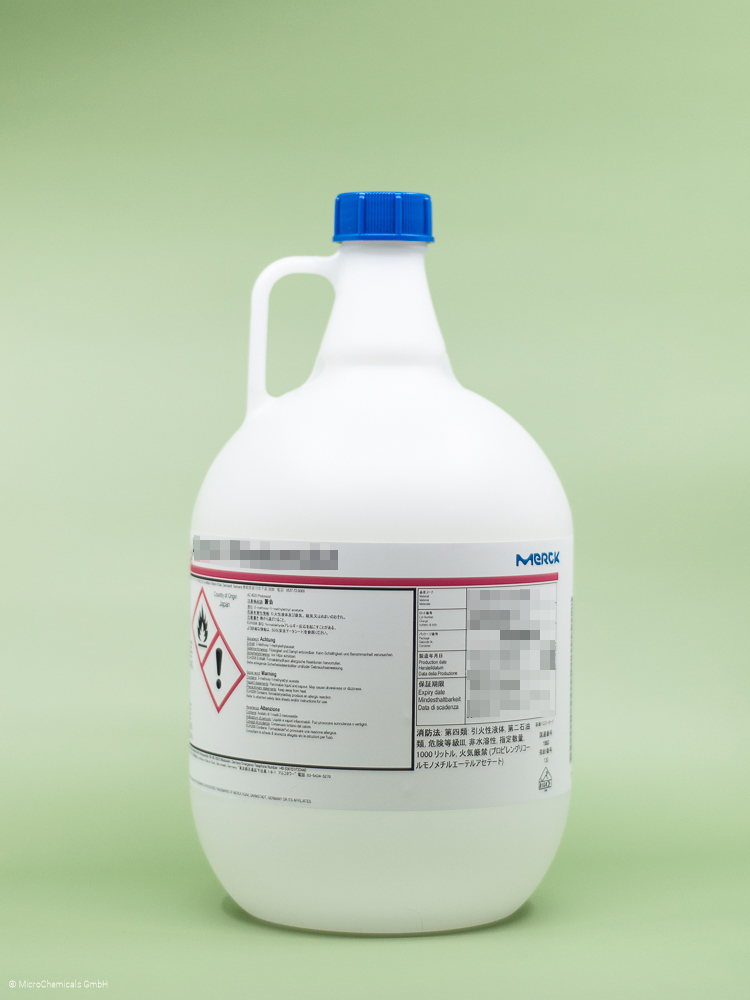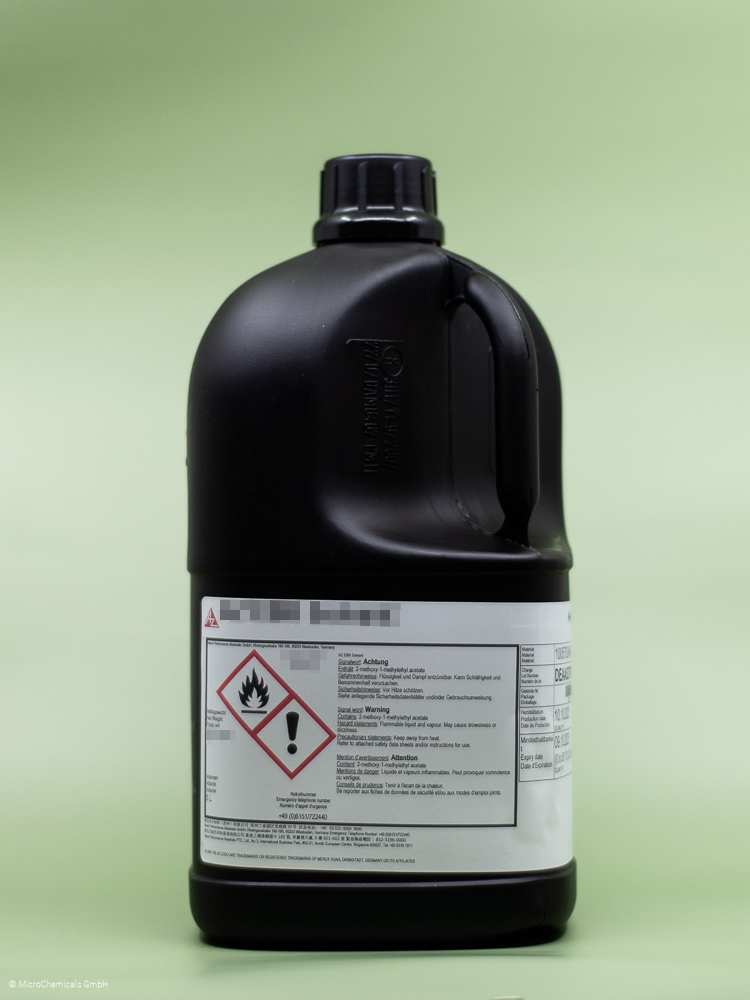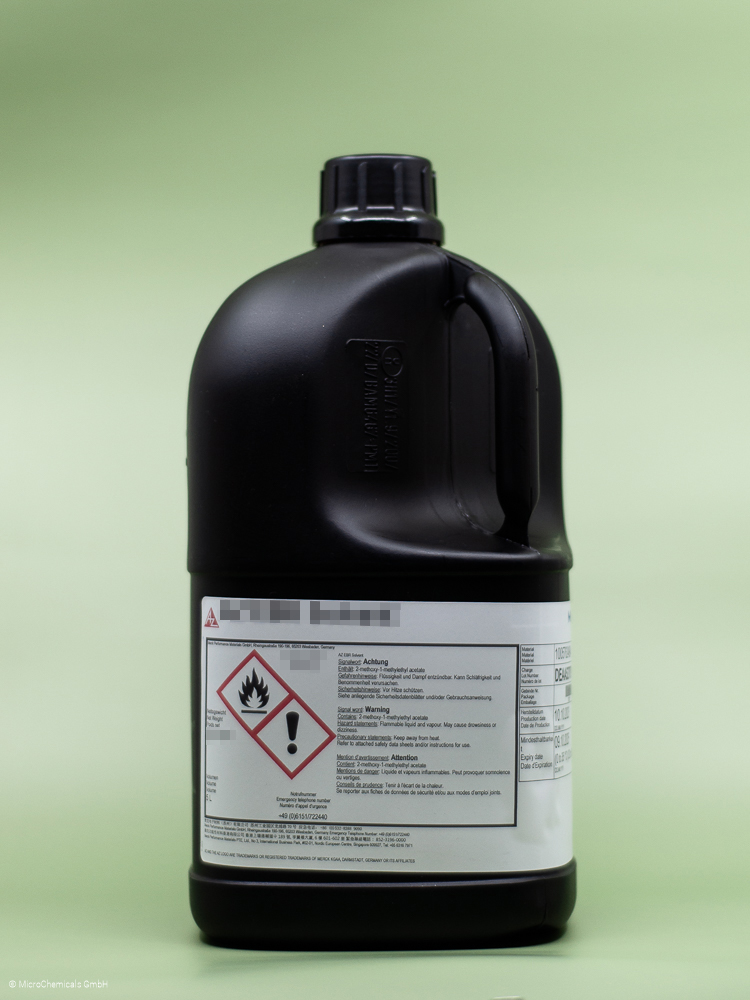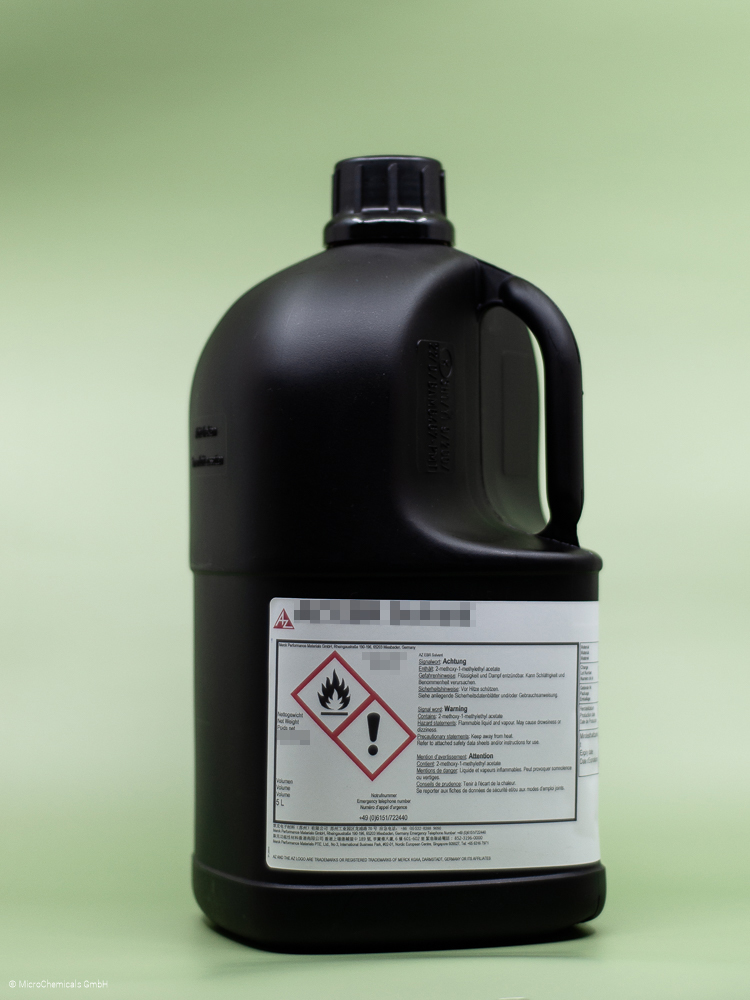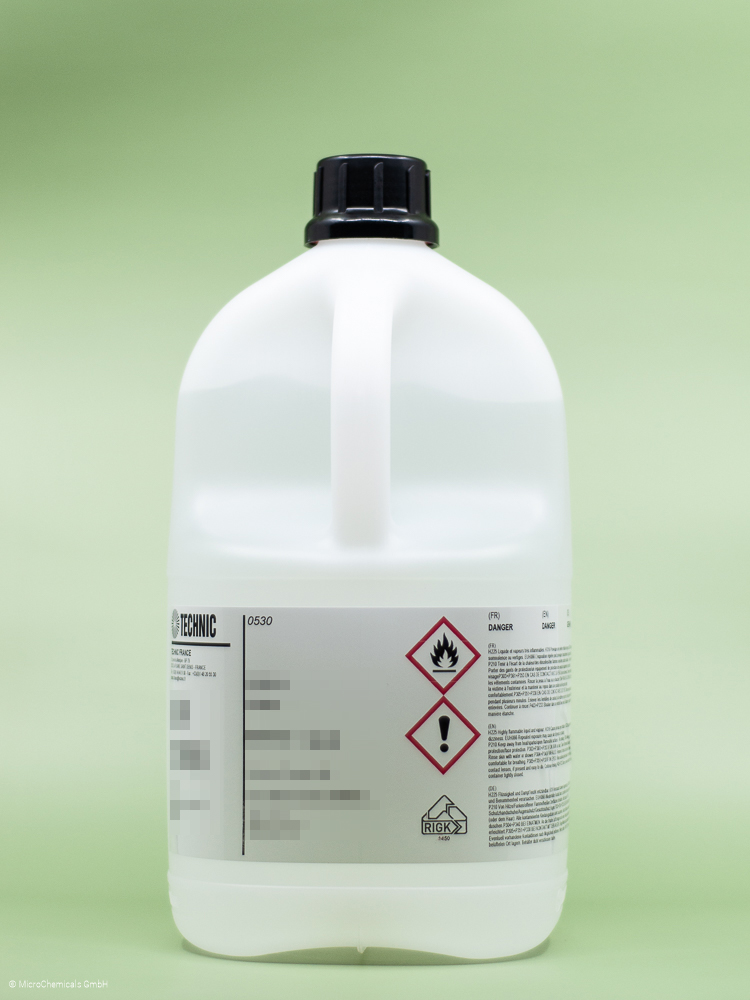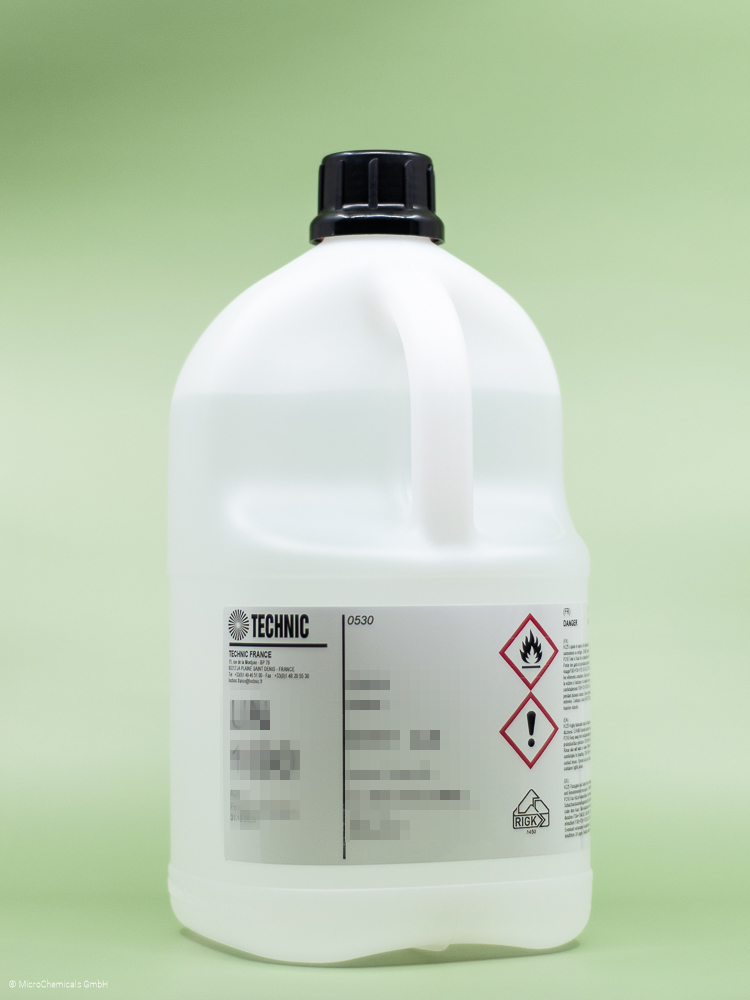AZ 5209-E Photoresist - 3.785 l












Product information "AZ 5209-E Photoresist - 3.785 l"
AZ® 5209E
Image Reversal Resist for High Resolution
General Information
This special photoresist is the thinner version of the AZ® 5200E series intended for lift-off techniques which call for a negative side wall profile. The reversal bake moderately cross-links the exposed resist making the developed structures thermally stable up to approx. 130°C. Due to the comparably low resist film thickness of ~ 0.9 µm, the process parameter window for an undercut is rather small thus requiring some optimizations in the exposure dose and the reversal bake parameters. Therefore, if the resolution required is not in the sub-µm range, a thicker resist such as the AZ® LNR-003 (next section), or the AZ® nLOF 2000 negative resists might be a good alternative.
Product Properties
- Very high resolution as a positive resist as well as a negative resist
- Possible negative sidewall profile in image reversal mode
- Compatible with all common developers (NaOH-, KOH- or TMAH-based)
- Compatible with all common strippers (e. g. with AZ® 100 Remover, organic solvents, or aqueous alkaline)
- h- and i-line sensitive (approx. 320 - 405 nm)
- Resist film thickness range approx. 0.7 - 1.2 µm
- High thermal stability especially in image reversal mode
Developers
If metal ion containing developers can be used, the NaOH-based AZ® 351B in a 1:4 dilution (for a required resolution < 1 µm 1:5 dilution recommended) is a suited developer.
The KOH-based AZ® 400K (also 1:4 - 1:5 diluted) is also possible.
If metal ion free developers have to be used, we recommend the TMAH-based AZ® 726 MIF or AZ® 326 MIF developer, normally undiluted, or - for maximum resolution - moderately 3:1 - 2:1 (3 parts Developer :1 part of DI-Water) diluted with water.
Removers
For non cross-linked resist films the AZ® 100 Remover, DMSO or other common organic solvents cab be used as stripper. If the resist film is crosslinked (e. g. by high temperature steps > 140°C, during plasma processes such as dry etching, or during ion implantation), we recommend the NMP-free TechniStrip P1316 as remover. AZ® 920 Remover can be a good choice as well, in case of harsh treated, hard to remove resist residuals.
Thinning/ Edge Bead Removal
We recommend for thinning and edge bead removal the products AZ® EBR Solvent or PGMEA.
Further Information
MSDS:
Safety Data Sheet AZ® 5209-E Photoresist english
Sicherheitsdatenblatt AZ® 5209-E Fotolack german
TDS:
Technical Data Sheet AZ® 5209-E Photoresist english
Application Notes:
Further Information about Photoresist Processing
Related products
Developer
Remover


